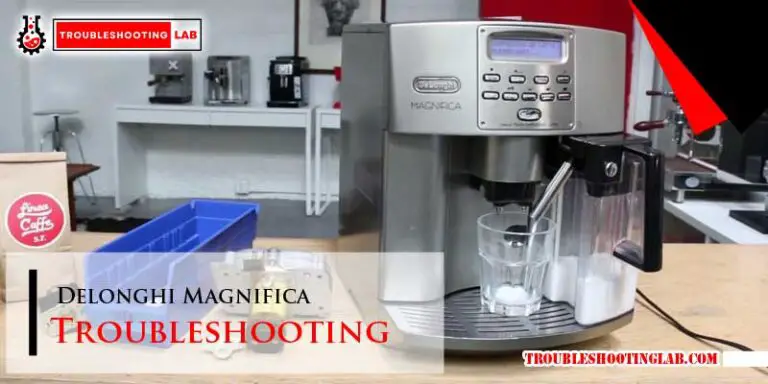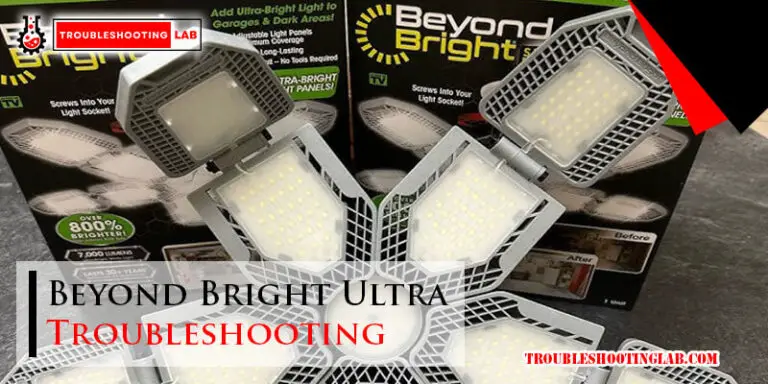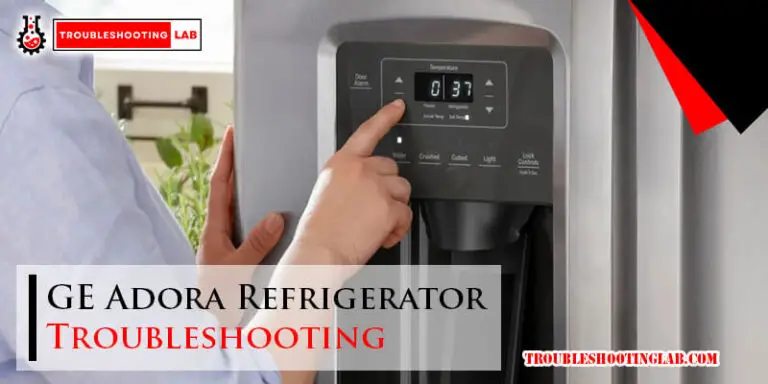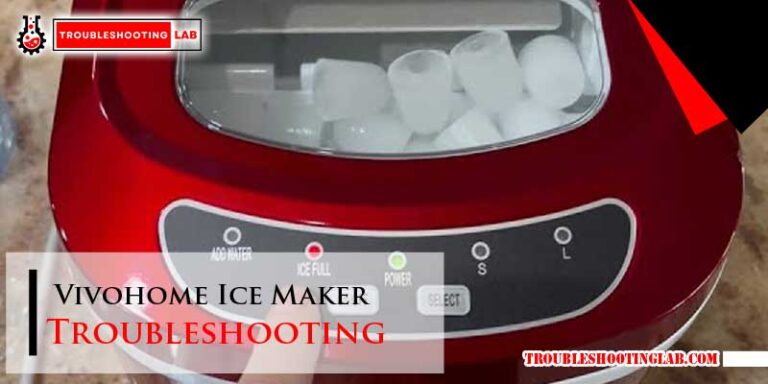Samsung Refrigerator Troubleshooting Codes: Unlocking the Secrets to Fixing Your Fridge
Samsung refrigerator troubleshooting codes can be cleared by entering diagnostic mode or contacting a Samsung technician for assistance with error codes. Temperature fluctuations are one of the most common problems with Samsung refrigerators, causing inadequate cooling or complete loss of cooling.
Resetting the control panel can be done by pressing and holding the Power Cool and Power Freeze buttons simultaneously for five seconds.

Understanding Samsung Refrigerator Error Codes
Error codes on your Samsung refrigerator are indicators that something is not functioning properly. Understanding these error codes can help you troubleshoot and resolve issues with your refrigerator. In this section, we will explore what error codes are, different categories of error codes, and the various issues they can signify. By familiarizing yourself with these error codes, you can effectively diagnose and address problems with your Samsung refrigerator.
What Are Error Codes?
Error codes are alphanumeric codes that appear on the display panel of your Samsung refrigerator when a fault is detected. These codes are designed to provide you with valuable information about the specific issue that needs attention. By understanding what these codes mean, you can take the necessary steps to resolve the problem and prevent further damage to your refrigerator.
Error Code Categories
Samsung refrigerator error codes can be categorized into three main areas: temperature and humidity sensors, mechanical issues, and computer problems.
| Error Code Category | Description |
|---|---|
| Sensors detect temperature and humidity | This category includes error codes related to temperature and humidity sensors. These sensors ensure that your refrigerator maintains the optimal temperature and humidity levels for food preservation. |
| Mechanical issues | This category encompasses error codes that indicate mechanical problems like faulty fans, heaters, defrost systems, or compressor issues. These components are crucial for the proper functioning of your refrigerator. |
| Computer issues | Computer-related error codes impact the logic and operation of your refrigerator. These codes can indicate problems with the control panel, circuit boards, or other electronic components. |
Sensors Detect Temperature And Humidity
Samsung refrigerators are equipped with temperature and humidity sensors that constantly monitor and regulate the internal climate. These sensors ensure that your fridge maintains the ideal temperature and humidity levels to keep your food fresh and safe. If an error code related to these sensors appears, it is important to address the issue promptly to maintain optimal storage conditions for your food items.
Mechanical Issues Can Include Fans, Heaters, Etc.
In addition to temperature and humidity sensors, Samsung refrigerators rely on various mechanical components for efficient and reliable operation. Error codes related to mechanical issues can include problems with fans, heaters, defrost systems, and other essential parts. It is important to address these issues promptly to avoid further damage and to ensure that your refrigerator functions optimally.
Computer Issues Affect The Fridge’s Logic
Modern Samsung refrigerators are equipped with sophisticated computer systems that control and monitor various functions. However, these computer systems can sometimes encounter problems that result in error codes. These issues can impact the logic and operation of your refrigerator, including the control panel and circuit boards. It is essential to address computer-related error codes promptly to avoid further complications and to ensure the optimal performance of your refrigerator.
Common Samsung Refrigerator Error Codes
Discover the common error codes that may appear on your Samsung refrigerator and troubleshoot the issue with ease. Decode these codes to identify the problem and find a solution for reliable cooling performance.
4e Failure Of Defrost Sensor
If you notice the error code 4e on your Samsung refrigerator, it indicates a failure of the defrost sensor. This sensor is responsible for regulating the defrost cycle to prevent ice buildup in the freezer. When the sensor fails, it can result in a variety of issues, including improper cooling and excessive ice formation.
To troubleshoot this problem, you can follow these steps:
- Unplug the refrigerator from the power source.
- Remove any food items from the freezer.
- Locate the defrost sensor, which is usually located near the evaporator coils.
- Inspect the sensor for any visible damage or loose connections.
- If the sensor seems damaged or disconnected, you may need to replace it.
- Refer to the user manual or contact a Samsung technician for instructions on replacing the sensor.
5 / 5e Defrost Sensor Failure And/or Power Outage
The error codes 5 or 5e on your Samsung refrigerator indicate a failure of the defrost sensor and/or a power outage. These error codes can occur if there is a disruption in the electrical supply or if the defrost sensor malfunctions.
To resolve this issue, you can try the following steps:
- Check the power supply to the refrigerator and ensure it is properly plugged in.
- If the power supply is fine, unplug the refrigerator for a few minutes and then plug it back in to reset the system.
- If the error persists, inspect the defrost sensor near the evaporator coils for any visible damage or loose connections.
- If necessary, replace the defrost sensor following the instructions provided in the user manual or seek assistance from a Samsung technician.
6e Ambient Sensor Error, Which May Occur After A Power Outage
The error code 6e on your Samsung refrigerator indicates an ambient sensor error. This error may occur after a power outage or if there is an issue with the ambient temperature sensor.
To troubleshoot this error, you can perform the following steps:
- Ensure that the refrigerator is properly plugged in and receiving power.
- Unplug the refrigerator for a few minutes and then plug it back in to reset the system.
- If the error persists, check the ambient temperature sensor for any visible damage or loose connections.
- If needed, replace the sensor following the instructions provided in the user manual or seek assistance from a Samsung technician.
8e Ice Maker Sensor Failure
If you encounter the error code 8e on your Samsung refrigerator, it indicates a failure of the ice maker sensor. This sensor is responsible for detecting the ice level in the ice maker and controlling its operation. When the sensor fails, it can result in problems such as ice overproduction or no ice production at all.
To troubleshoot this error, you can try the following steps:
- Check the ice maker area for any visible obstruction or ice buildup that may be affecting the sensor’s operation.
- Remove any ice or obstructions carefully.
- Inspect the ice maker sensor for any visible damage or loose connections.
- If necessary, replace the sensor following the instructions provided in the user manual or seek assistance from a Samsung technician.
In case the above troubleshooting steps do not resolve the issue, it is recommended to contact a Samsung technician for further assistance. They will be able to diagnose the problem accurately and provide you with the necessary solutions.
How To Reset A Samsung Refrigerator
To reset a Samsung refrigerator and clear any error codes, you can try pressing and holding the Power Cool and Power Freeze buttons simultaneously for five seconds. This should restore the fridge to its default settings and resolve common issues like temperature fluctuations.
Alternatively, you can consult the manual or contact a Samsung technician for specific troubleshooting instructions.
Using Diagnostic Mode To Check For Error Codes
To troubleshoot and resolve issues with your Samsung refrigerator, it is helpful to know how to use the diagnostic mode to check for error codes.
- Press and hold the Energy Saver and Freezer buttons simultaneously for about 8 seconds until the display panel lights up.
- The display panel will show different error codes, if any are present. Note down the error codes that appear.
- Refer to the Samsung refrigerator manual or online resources to understand what each error code means and how to fix it.
Using diagnostic mode to check for error codes can provide valuable information about the problem your Samsung refrigerator is experiencing, allowing you to take appropriate action to resolve it.
Resetting The Control Panel
If you are facing issues with your Samsung refrigerator, resetting the control panel can often help resolve them. Here’s how to do it:
- Locate the Reset Button on your Samsung refrigerator’s control panel.
- Press and hold the Reset Button for about 10 seconds until the display panel goes blank.
- Release the button and wait for a few minutes for the refrigerator to reset.
- The control panel should now be reset, and any glitches or malfunctions should be cleared.
Resetting the control panel can be an effective troubleshooting step to resolve various issues with your Samsung refrigerator.
Frequently Asked Questions For Samsung Refrigerator Troubleshooting Codes
How Do I Run A Diagnostic On My Samsung Refrigerator?
To run a diagnostic on your Samsung refrigerator, follow these steps: 1. Enter the Diagnostic Mode by checking for error codes. 2. Press and hold the Power Cool and Power Freeze buttons simultaneously for five seconds to reset the fridge. 3.
If successful, you’ll hear a chime, and the fridge will restart with default settings. 4. If you encounter any other issues or error codes, contact a Samsung technician for assistance. 5. Temperature fluctuations are a common problem with Samsung refrigerators.
How Do I Reset My Samsung Refrigerator Control Panel?
To reset your Samsung refrigerator control panel, simply press and hold the Power Cool and Power Freeze buttons simultaneously for five seconds. You’ll hear a chime, indicating that the reset was successful. The refrigerator will then restart with the default settings.
What Buttons Do I Push To Reset My Samsung Refrigerator?
To reset your Samsung refrigerator, press and hold the Power Cool and Power Freeze buttons simultaneously for five seconds. You will hear a chime, and the fridge will restart with default settings.
What Is The Most Common Problem With Samsung Refrigerators?
Temperature fluctuations are the most common problem with Samsung refrigerators. This can result in inadequate cooling, inconsistent temperatures, or even a complete loss of cooling.
Why Is My Samsung Refrigerator Displaying Error Codes?
Error codes on your Samsung refrigerator indicate that a fault has been detected. These codes help identify the specific issue.
Conclusion
Understanding the error codes on your Samsung refrigerator is essential for troubleshooting and resolving issues. By familiarizing yourself with the error codes and their meanings, you can easily identify and address any problems that may arise. Whether it’s a mechanical issue or a computer-related problem, contacting a Samsung technician for assistance is always recommended.
Remember, not all problems will trigger an error code, so it’s important to regularly check for any unusual signs or behaviors. By properly maintaining and addressing any issues, you can ensure that your Samsung refrigerator continues to function optimally.





